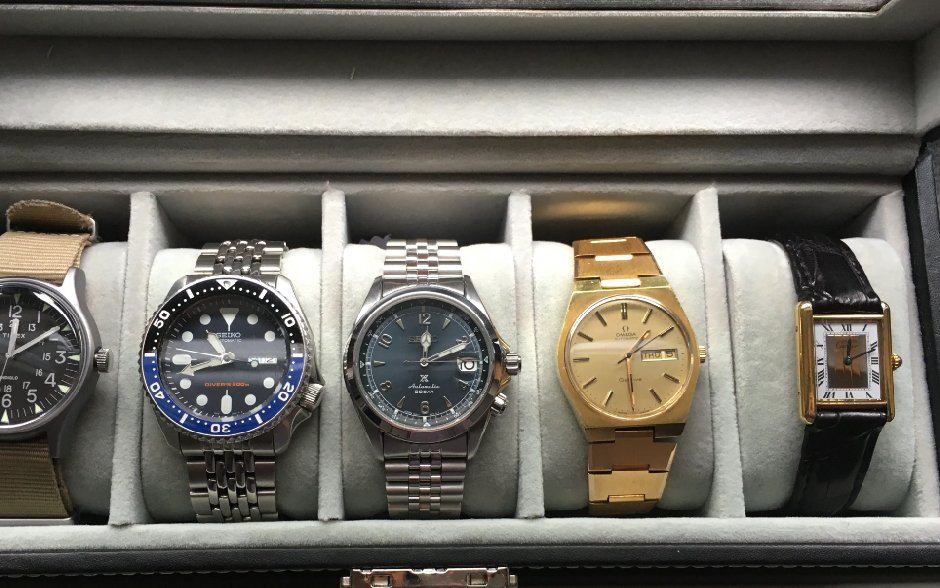Collecting watches is not just about the possession of pristine timepieces, but about the pursuit of precision, heritage, and style. As an industry that reached a global market value of over $61 billion in 2021, watch collecting is much more than a hobby. it’s an entry into a world where art meets engineering. Let’s take a closer look.
Understanding Watch Types and Movements
Understanding the distinction between watch types and movements is fundamental in watch collecting. Mechanical watches are powered by a complex system of springs and gears, and require manual winding, whereas automatic watches also harness mechanical movements but are wound by the wearer’s movements.
Quartz watches, powered by a battery and regulated by quartz crystal, are significantly more accurate, losing only about 15 seconds per month, compared to mechanical watches which can lose up to 25 seconds per day if not finely tuned. Each type offers a different appeal. Mechanical watches are prized for their craftsmanship and tradition, automatics for their convenience and engineering, and quartz for their precision and reliability.
What is “Good Quality” in Watches
The definition of “good quality” in watches hinges on several critical factors: materials, craftsmanship, and brand heritage. High-quality materials such as 316L stainless steel or titanium are commonly used for durability and corrosion resistance, while sapphire crystal, known for its scratch resistance, is preferred over mineral glass or acrylic.
Craftsmanship is evident in the precision of the movement and the finish of the case and dial. Swiss and Japanese movements are often heralded for their reliability and accuracy. Brand heritage also plays a significant role. Established brands like Rolex and Omega maintain a resale value retention rate of 74% to 100% due to their longstanding reputations for quality and robustness.
Where to Start – Entry-Level Brands and Models
Starting a watch collection intelligently usually involves selecting entry-level brands and models known for their quality and value. Brands like Seiko, Tissot, and Citizen are ideal starting points. They offer robust construction and reliable movements at a moderate price. Seiko is known for its Seiko 5 series, which features automatic movements and water resistance at a price point often below $200, making it accessible for novice collectors.
Citizen’s Eco-Drive series (powered by solar technology) eliminates the need for battery replacements. Tissot offers Swiss-made quality with its Everytime Swissmatic model, which utilizes an automatic movement providing up to three days of power reserve. It’s priced around just $375.
Budgeting for Your Collection
Effective budgeting is quite important when you start building a watch collection. A practical approach is to allocate a specific percentage of discretionary income to your hobby and ensure it doesn’t hinder other financial responsibilities. Industry experts often recommend starting with an allocation of about 5% to 10% of your monthly disposable income towards acquiring new pieces.
This strategy allows for gradual expansion without financial strain. It’s also wise to consider the long-term costs associated with watch collecting, like maintenance and insurance. Regular servicing for a mechanical watch can cost between $200 to $500 every 5 to 10 years depending on the brand and model complexity.
The Pre-Owned and Vintage Markets
Navigating the pre-owned and vintage watch markets requires both caution and knowledge. These markets offer opportunities to acquire unique and sometimes rare watches at prices often lower than new retail prices. According to industry reports, the pre-owned market is growing at a rate of 5% annually, with luxury brands like Rolex and Patek Philippe often appreciating in value over time. Potential buyers should prioritize purchasing from reputable dealers or platforms that provide authenticity guarantees and service records.
It’s also crucial to understand the watch’s provenance and condition, as restoration or replacement of original parts in vintage watches can significantly alter their value. It’s also a good idea to keep learning about common issues like dial refinishing or counterfeit parts. This can protect you from costly mistakes.
Evolving Your Collection
Evolving a watch collection from beginner to advanced stages involves strategic acquisitions and sometimes the sale of existing pieces to fund new purchases. As one Phoenix-based watch buyer said – if you ever get tired of your old watches you can always trade them in for other models. You should periodically assess your collection, focusing on diversification and the inclusion of pieces that offer both sentimental and financial value.
As your experience and knowledge grow, you can shift your focus towards higher-quality, rare, or historically significant watches. Transitioning into collecting watches like the Omega Speedmaster (which is known for its spaceflight history), or the Jaeger-LeCoultre Reverso (with its unique reversible case), can enhance both the prestige and potential resale value of your collection.
You can also join collector groups and participate in auctions. This can provide opportunities to acquire unique pieces and sell others at a profit.
Investment Perspective
Viewing watches as an investment requires an understanding of which models and brands are likely to appreciate in value. Luxury brands such as Rolex and Patek Philippe have shown robust market performance historically, with some models appreciating by up to 5% to 15% annually. Specific models like the Rolex Daytona have seen remarkable appreciation due to their iconic status and limited production numbers.
As a potential investor you should focus on limited edition pieces and those with significant historical relevance, as these factors typically contribute to higher resale values. It’s essential to monitor market trends and maintain watches in excellent condition. Any signs of wear or unoriginal parts can reduce a watch’s investment potential.
Iconic Watches Worth Aspiring For
Seasoned collectors often set their sights on timepieces that embody exceptional craftsmanship and also carry a storied heritage. The Rolex Submariner stands out for its pioneering role in diving watches and retains up to 100% of its value over time.
Another notable example is the Audemars Piguet Royal Oak, which revolutionized luxury watch design with its distinctive octagonal bezel and integrated bracelet. The Patek Philippe Nautilus is recognized for its sophisticated and sleek design. It has seen its value skyrocket in recent years, with prices increasing by over 50% on the secondary market.
Final Words
Building a watch collection is an investment in understanding and appreciation of fine engineering and design. Collectors learn to discern between mere aesthetics and profound value, balance their budgets with their desires, and connect with a community that shares their passion. By starting with affordable quality and gradually moving to luxury and rarity, you can witness the evolution of your taste and financial acumen, while also partaking in a tradition that transcends time itself.






